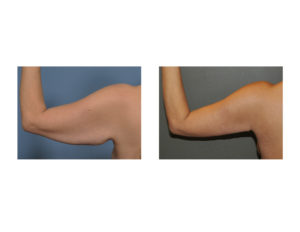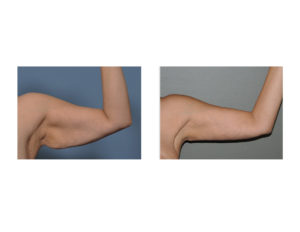Extreme amounts of weight loss from bariaric surgery are well known to cause a lot of body changes with the development of sagging excess skin. Of all the possible bariatric plastic surgery options amongst women the brachioplasty or arm lift procedure is usually in the top three body changes desired. (I have never had a request for an arm lift in a man) While it produces a visible scar, most patients are willing to accept that tradeoff get rid of their ‘batwings’ if they are big enough.
While patients are willing to accept the scars from arm lift surgery, modifications in the procedure have been done over the years to improve its appearance. One of the most important modifications has been where the scar is located. Options include the back of the arm (posterior), the inside of the arm (medial) and in between those two locations. (posteromedial) One of the considerations in choosing these scar locations is visibility. The posteromedial scar location is the most ‘hidden’ of the three although that is a relative concept when you have a scar running down the whole length of the upper arm.

Postoperative complications consisted on only one wound dehiscence. (4%) The physical model testing showed that the stress intensity and distribution along the scar were reduced in the posteromedial location with smaller scar displacement in the loading simulations. Assessment of the scars were associated with high satisfaction rates in both patients and in dependent surgeon evaluations.

Dr. Barry Eppley
Indianapolis, Indiana


